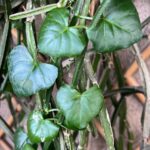This is the final part of the soil amendment series. Please follow the links to read the earlier ones.
In this post, we will cover Diatomaceous Earth and Perlite/Vermiculitre both of which are available here online. Most are useful in a garden that has a variety of plants.
Diatomaceous Earth
Natural diatomaceous earth is inert, retains water, and has a high porosity that allows the soil to breathe. These qualities and more make it an efficient tool for horticulturists, with benefits including improved plant structure, moisture retention and drought resistance. Studies prove that with the addition of Diatomaceous Earth, the nutrient level of the soil was significantly improved. The results of a Southern Cross University study suggest that the addition of Diatomaceous Earth to soil condition fertilizer may allow for more efficient use of fertilizer and reduce the impact that fertilizer has on the environment through leaching. As a result of this study, it was also discovered that natural diatomaceous earth improved moisture retention in potting mix and soil by retaining a greater quantity of water and drying at a slower rate. The silica content of diatomaceous earth is absorbed into plant tissue and helps improve plant structure and resistance to pests and disease.
I normally add DE to my soil mix if I have it on hand and if I don’t I work it into the soil of my pots by sprinkling 1 -1.5 tablespoons in the larger pots and 1 tablespoon in the smaller ones. The added benefit is that soft-bodied pests like weevils and ants are also taken care of by adding this to your soil mix.

Perlite and Vermiculite:
We have often heard of Perlite and Vermiculite but what are they really? Both help to retain moisture in the soil and are great for increasing drought resistance. However, Vermiculite is quite expensive, and perlite needs to be worked well into the soil as it is like Styrofoam balls. Don’t use vermiculite for cacti and succulents, use it for things that need more moisture like Hydrangeas and ferns. But use perlite for succulents as it works well. In addition to retaining some water, perlite can also retain air, which helps with soil aeration. It also helps prevent soil compaction, helping facilitate good drainage in easily compacted clay soils.

The other aspect is plant amendments like plant growth regulators e.g Gibberellic acid, Amino acids, and Seaweed and Kelp extract which basically help in things like seed germination, root development, resistance to drought, stress, leaf growth, fruit set, the flavor of fruit/vegetable, and nutrient uptake. Although there is a thin line between the two, both kinds are necessary for the health and bounty of your garden.






Recent Comments